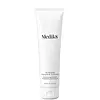What's inside
What's inside
 Key Ingredients
Key Ingredients

 Benefits
Benefits

 Concerns
Concerns

 Ingredients Side-by-side
Ingredients Side-by-side

Rosa Damascena Flower Water
MaskingWater
Skin ConditioningGlycerin
HumectantDecyl Glucoside
CleansingGlycol Distearate
EmollientDisodium Cocoamphodiacetate
CleansingPPG-26-Buteth-26
Skin ConditioningSodium Cocoyl Apple Amino Acids
Skin ConditioningPEG-40 Hydrogenated Castor Oil
EmulsifyingXanthan Gum
EmulsifyingCaprylic/Capric Triglyceride
MaskingGluconolactone
Skin ConditioningBenzyl Alcohol
PerfumingSodium Chloride
MaskingChondrus Crispus Extract
Skin ConditioningTitanium Dioxide
Cosmetic ColorantSodium Benzoate
MaskingHexylene Glycol
EmulsifyingOleth-10
EmulsifyingDehydroacetic Acid
PreservativeLavandula Angustifolia Extract
Skin ConditioningAlumina
AbrasiveAluminum Stearate
Cosmetic ColorantCitric Acid
BufferingIsodeceth-6
EmulsifyingPotassium Sorbate
PreservativeTetrasodium Glutamate Diacetate
Pelargonium Graveolens Extract
MaskingRosmarinus Officinalis Extract
AntimicrobialCalcium Gluconate
HumectantPinus Sylvestris Cone Extract
MaskingThymus Zygis Herb Extract
PerfumingPhenoxyethanol
PreservativeSimethicone
EmollientRosa Canina Fruit Oil
EmollientGeraniol
PerfumingFarnesol
PerfumingLinalool
PerfumingCitronellol
PerfumingRosa Damascena Flower Water, Water, Glycerin, Decyl Glucoside, Glycol Distearate, Disodium Cocoamphodiacetate, PPG-26-Buteth-26, Sodium Cocoyl Apple Amino Acids, PEG-40 Hydrogenated Castor Oil, Xanthan Gum, Caprylic/Capric Triglyceride, Gluconolactone, Benzyl Alcohol, Sodium Chloride, Chondrus Crispus Extract, Titanium Dioxide, Sodium Benzoate, Hexylene Glycol, Oleth-10, Dehydroacetic Acid, Lavandula Angustifolia Extract, Alumina, Aluminum Stearate, Citric Acid, Isodeceth-6, Potassium Sorbate, Tetrasodium Glutamate Diacetate, Pelargonium Graveolens Extract, Rosmarinus Officinalis Extract, Calcium Gluconate, Pinus Sylvestris Cone Extract, Thymus Zygis Herb Extract, Phenoxyethanol, Simethicone, Rosa Canina Fruit Oil, Geraniol, Farnesol, Linalool, Citronellol
Water
Skin ConditioningSodium C14-16 Olefin Sulfonate
CleansingSodium Cocoamphoacetate
CleansingCocamidopropyl Hydroxysultaine
CleansingGlycerin
HumectantMandelic Acid
AntimicrobialSalicylic Acid
MaskingCitrus Aurantium Dulcis Peel Oil
MaskingCitric Acid
BufferingCitrus Aurantium Dulcis Fruit Extract
MaskingSodium Hydroxide
BufferingRubus Idaeus Fruit Extract
AstringentYucca Schidigera Root Extract
Skin ConditioningLactic Acid
BufferingPhenoxyethanol
PreservativeCitrus Grandis Peel Oil
MaskingMaltodextrin
AbsorbentDisodium EDTA
Garcinia Mangostana Peel Extract
Skin ConditioningEthylhexylglycerin
Skin ConditioningCitrus Aurantifolia Oil
CleansingCitrus Aurantium Bergamia Fruit Oil
MaskingCitrus Aurantium Amara Peel Oil
Skin ConditioningLimonene
PerfumingLinalool
PerfumingWater, Sodium C14-16 Olefin Sulfonate, Sodium Cocoamphoacetate, Cocamidopropyl Hydroxysultaine, Glycerin, Mandelic Acid, Salicylic Acid, Citrus Aurantium Dulcis Peel Oil, Citric Acid, Citrus Aurantium Dulcis Fruit Extract, Sodium Hydroxide, Rubus Idaeus Fruit Extract, Yucca Schidigera Root Extract, Lactic Acid, Phenoxyethanol, Citrus Grandis Peel Oil, Maltodextrin, Disodium EDTA, Garcinia Mangostana Peel Extract, Ethylhexylglycerin, Citrus Aurantifolia Oil, Citrus Aurantium Bergamia Fruit Oil, Citrus Aurantium Amara Peel Oil, Limonene, Linalool
 Reviews
Reviews

Ingredients Explained
These ingredients are found in both products.
Ingredients higher up in an ingredient list are typically present in a larger amount.
Citric Acid is an alpha hydroxy acid (AHA) naturally found in citrus fruits like oranges, lemons, and limes.
Like other AHAs, citric acid can exfoliate skin by breaking down the bonds that hold dead skin cells together. This helps reveal smoother and brighter skin underneath.
However, this exfoliating effect only happens at high concentrations (20%) which can be hard to find in cosmetic products.
Due to this, citric acid is usually included in small amounts as a pH adjuster. This helps keep products slightly more acidic and compatible with skin's natural pH.
In skincare formulas, citric acid can:
While it can provide some skin benefits, research shows lactic acid and glycolic acid are generally more effective and less irritating exfoliants.
Most citric acid used in skincare today is made by fermenting sugars (usually from molasses). This synthetic version is identical to the natural citrus form but easier to stabilize and use in formulations.
Read more about some other popular AHA's here:
Learn more about Citric AcidGlycerin is already naturally found in your skin. It helps moisturize and protect your skin.
A study from 2016 found glycerin to be more effective as a humectant than AHAs and hyaluronic acid.
As a humectant, it helps the skin stay hydrated by pulling moisture to your skin. The low molecular weight of glycerin allows it to pull moisture into the deeper layers of your skin.
Hydrated skin improves your skin barrier; Your skin barrier helps protect against irritants and bacteria.
Glycerin has also been found to have antimicrobial and antiviral properties. Due to these properties, glycerin is often used in wound and burn treatments.
In cosmetics, glycerin is usually derived from plants such as soybean or palm. However, it can also be sourced from animals, such as tallow or animal fat.
This ingredient is organic, colorless, odorless, and non-toxic.
Glycerin is the name for this ingredient in American English. British English uses Glycerol/Glycerine.
Learn more about GlycerinLinalool is a fragrance and helps add scent to products. It's derived from common plants such as cinnamon, mint, citrus, and lavender.
Like Limonene, this ingredient oxidizes when exposed to air. Oxidized linalool can cause allergies and skin sensitivity.
This ingredient has a scent that is floral, spicy tropical, and citrus-like.
Learn more about LinaloolPhenoxyethanol is a preservative that has germicide, antimicrobial, and aromatic properties. Studies show that phenoxyethanol can prevent microbial growth. By itself, it has a scent that is similar to that of a rose.
It's often used in formulations along with Caprylyl Glycol to preserve the shelf life of products.
Water. It's the most common cosmetic ingredient of all. You'll usually see it at the top of ingredient lists, meaning that it makes up the largest part of the product.
So why is it so popular? Water most often acts as a solvent - this means that it helps dissolve other ingredients into the formulation.
You'll also recognize water as that liquid we all need to stay alive. If you see this, drink a glass of water. Stay hydrated!
Learn more about Water